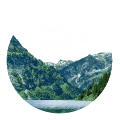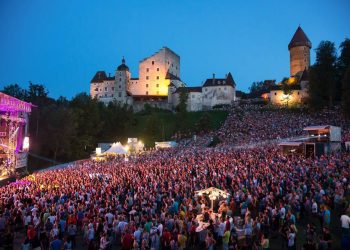The Mauthausen concentration camp was established in 1938 and soon became the main camp in the region, managing about 40 nearby labor and concentration subcamps. Until 1941, the camp was used to imprison enemies of the Nazi regime, not necessarily Jews. From 1941, many Jews, mainly from Czechoslovakia and the Netherlands, began to be imprisoned there.
The prisoners in the camp suffered from torture, subhuman conditions, and forced labor. Most of them died as a result of the hard labor imposed on them. The number of people murdered in Mauthausen is estimated in the hundreds of thousands, with estimates ranging from 120,000 to 320,000 people murdered there. According to records, about 38,000 of those murdered were Jewish.
The camp was liberated in 1945.
Visiting the Concentration Camp
Today, Mauthausen serves as a memorial site for the Holocaust and for learning about the crimes of the Nazis during this period. When you arrive at the entrance of the camp, which is surrounded by green fields and a wonderful landscape, it is hard to imagine that in such a peaceful place, unimaginable crimes were committed during World War II. The large watchtowers and high walls hide what happened inside the complex, making it look like a fortified and enclosed fortress.
The walking path begins outside the camp building, and along it, you see the fields where the soldiers would spend their weekends playing ball games and the place where the prisoners would exhaustingly and continuously collect stones until their strength gave out.
After climbing the path, you reach the location of large monuments in memory of the many victims. One monument is for the Jewish victims. From there, you enter the camp complex through the gate. In this section are the meager living quarters where hundreds of prisoners were crowded, without blankets or bedding and, of course, without heating during the cold winter days.
From the living area, the path continues to the gas chambers and the crematorium oven. Next to them is the “Room of Names,” where the names of all the victims are displayed on the walls. The font size of the names is very small to accommodate the large number of people who lost their lives in the camp. There is also a huge book in which all the names of the deceased are recorded.
At the end of the visit, you reach the cemetery, which has many tombstones in memory of the murdered.
You can visit the camp as part of a guided tour or simply take an audio guide and wander independently. There is also a very detailed interactive map with all the important places in the complex. You can see the map here.
Watch a short informational video about the concentration camp (in English).
Additional Essential Information for Visiting Mauthausen
Opening Hours:
- March 1 to October 26: Monday to Sunday from 9:00 AM to 5:30 PM. Last entry at 4:45 PM.
- October 27 to February 28: Tuesday to Sunday from 9:00 AM to 3:45 PM. Last entry at 3:00 PM. Closed on Mondays.
- Closed on: December 24, 25, 31, and January 1.
Cost:
Entry to the concentration camp is free of charge. There is an option to join a guided tour or take an audio guide for a nominal fee.
- Guided tour (2-hour tour): €8. Reduced price for students: €5.
- Audio guide: €5.
Official Website
Address
Erinnerungsstraße 1, 4310 Mauthausen
How to get to Mauthausen from Vienna?
The distance between Vienna and Mauthausen is 190 kilometers, and the drive by car takes about two hours.
You can also get there by public transport. You need to take a train from Vienna, departing from the main train station (Hauptbahnhof) or the West train station (Westbahnhof), to the city of Linz. From there, take bus number 360 towards Mauthausen. You need to get off at the Linzerstraße/Wasserwerk stop. From the stop, it is about a 1.5-kilometer uphill walk to the concentration camp.
To check the most up-to-date train and bus times, it is advisable to use Google Maps. Click here to plan the route on Google Maps.


















